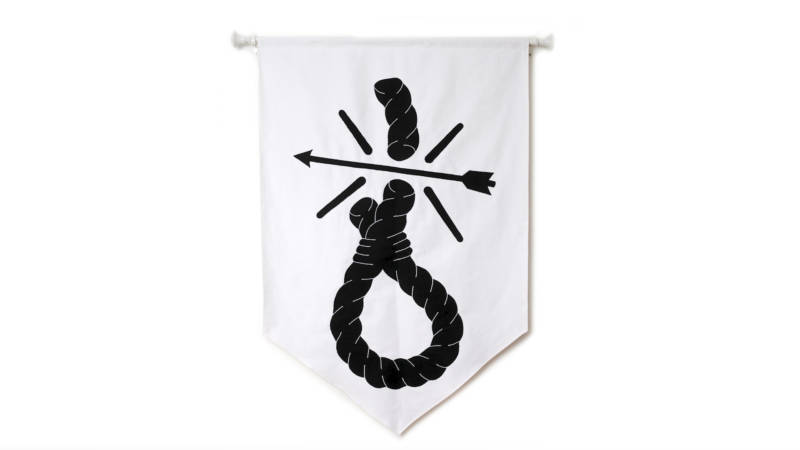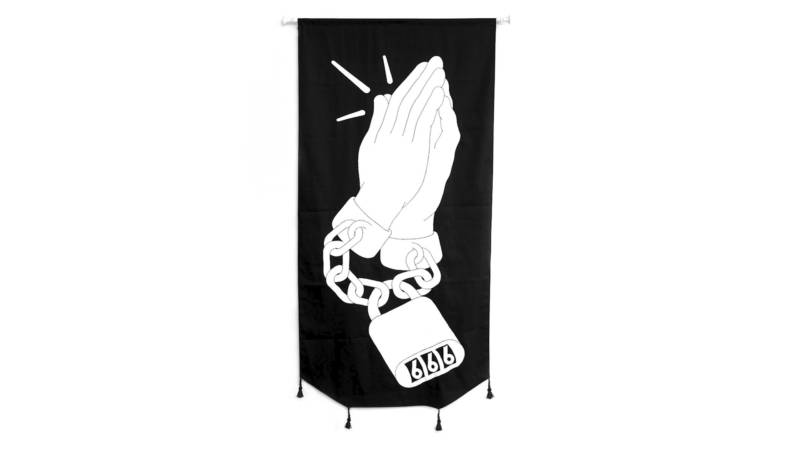Even in a crowded group show, it’s impossible to miss Christopher Martin’s work. His large-scale banners, usually sewn out of black and white cotton, depict graphic images—graphic in both senses of the word. His symbols (nooses, swastikas, chains, KKK hoods) pull from the images of racist ideologies, but Martin reclaims them, manipulating and twisting their hateful intentions while laying bare the continued relevance of this work, even in “progressive” places like the Bay Area. “I just used that energy in a more productive way,” he explains.

Growing up in Greensboro, North Carolina, Martin was well aware of his hometown’s racial dynamics: Confederate flags hung at people’s front doors. “Moving to the Bay Area, I had this moment of reflection of where I came from,” he says. “I had to leave it to figure out what I wanted to speak about through my artwork.”
Helping him find that voice has been the NURE collective (formerly known as the Black Mail collective), a group of Black artists supporting each other with shared studio space and exhibition opportunities. “It feels comforting,” Martin says, “having that safe space to create artwork with a tribe of fellow Black people in this time where so many of us are getting pushed out.”
Martin was recently part of the San Francisco Art Institute exhibition Vanguard Revisited: Poetic Politics & Black Futures, a show that revisited photographs of the Black Panther’s social programs and looked to the future via work by local contemporary artists. “It’s a little bit of weight on my shoulders,” Martin admits, “but I have great pride in participating and pushing this storyline of Black Power.”

And Martin’s ties to his roots extend beyond source material—he and his mother run an apparel business together called Cypher (she knits the beanies). He acknowledges the symbols in his work can be divisive: some find the violence implicit in the images he uses triggering. He feels the emotional strain of working with the material himself, a psychic state he counters by listening to and playing the blues. Ultimately, he finds the process of making his art a healing one. By making work that speaks to his own experiences, and holding a mirror up to not just historical but contemporary injustices, Martin dreams of ushering in the creation of a more equitable world. —Text by Sarah Hotchkiss

